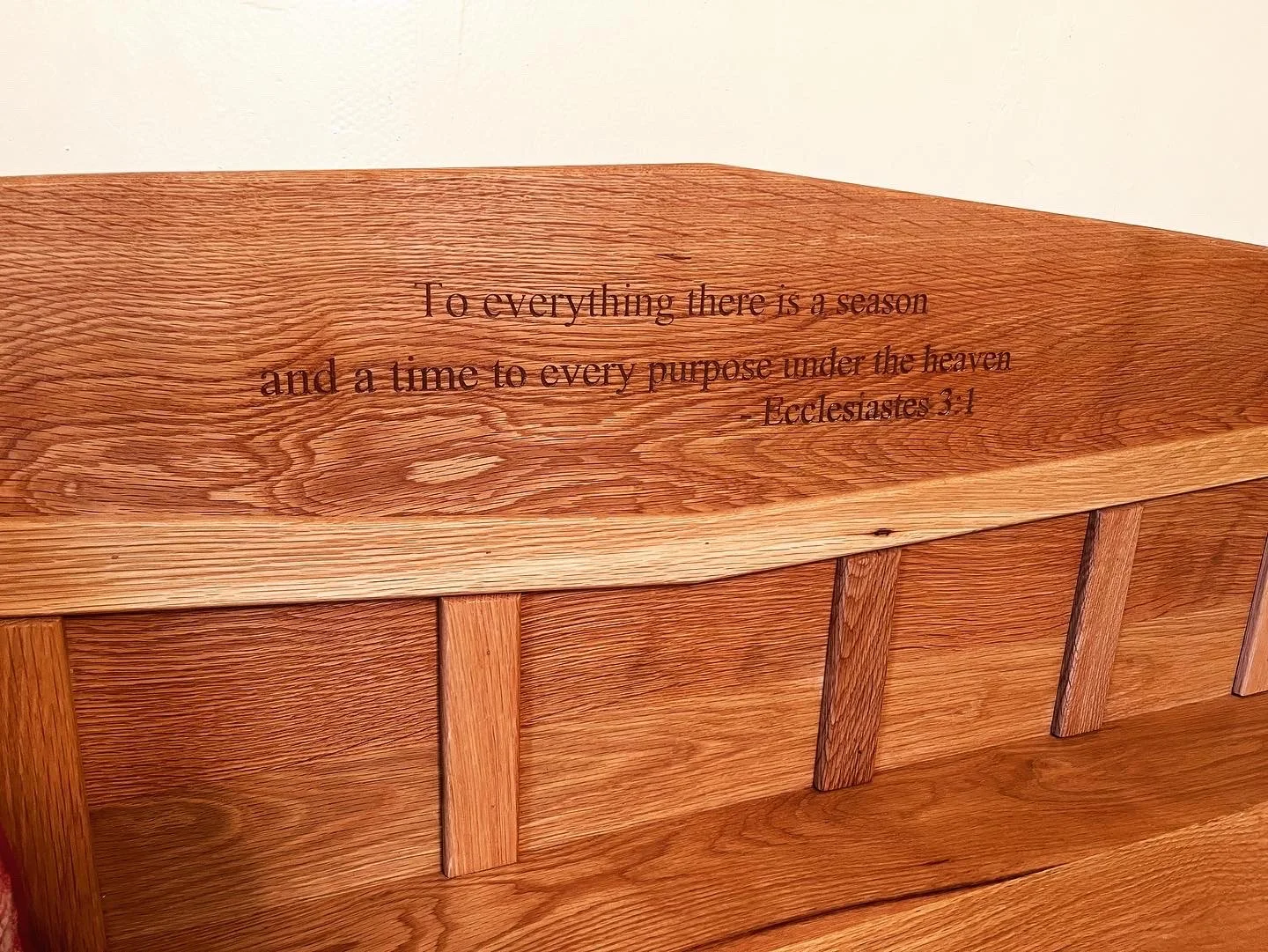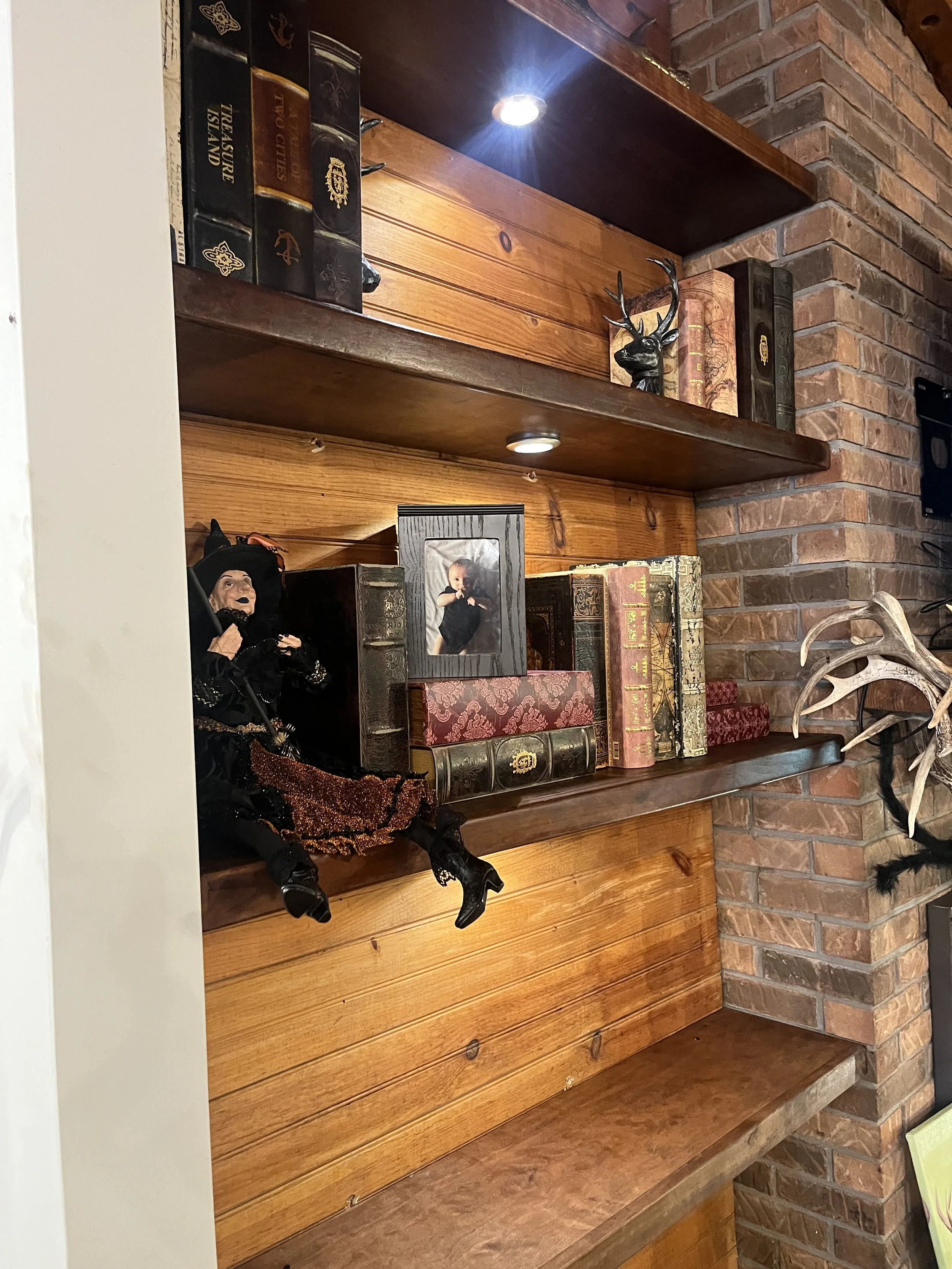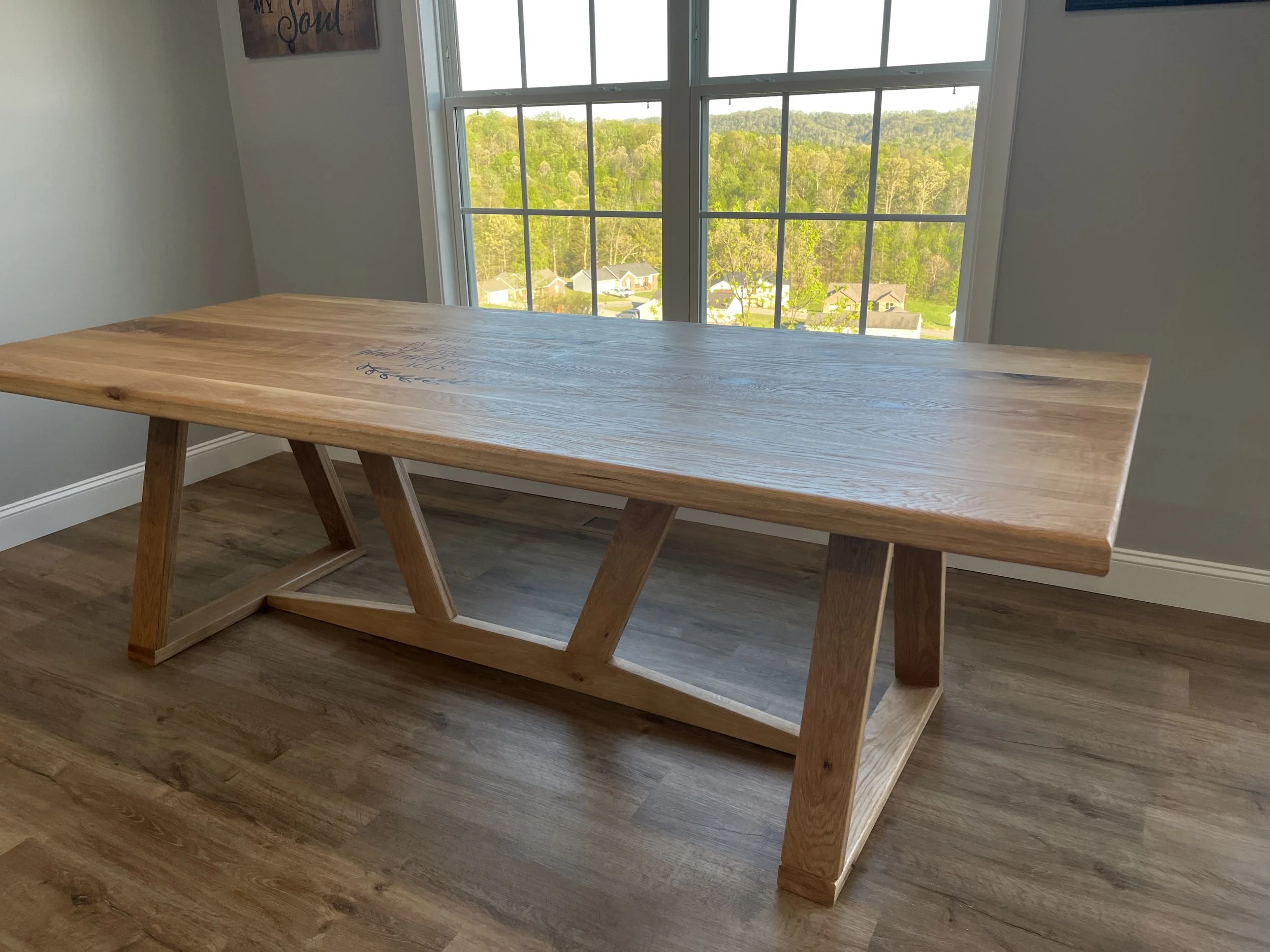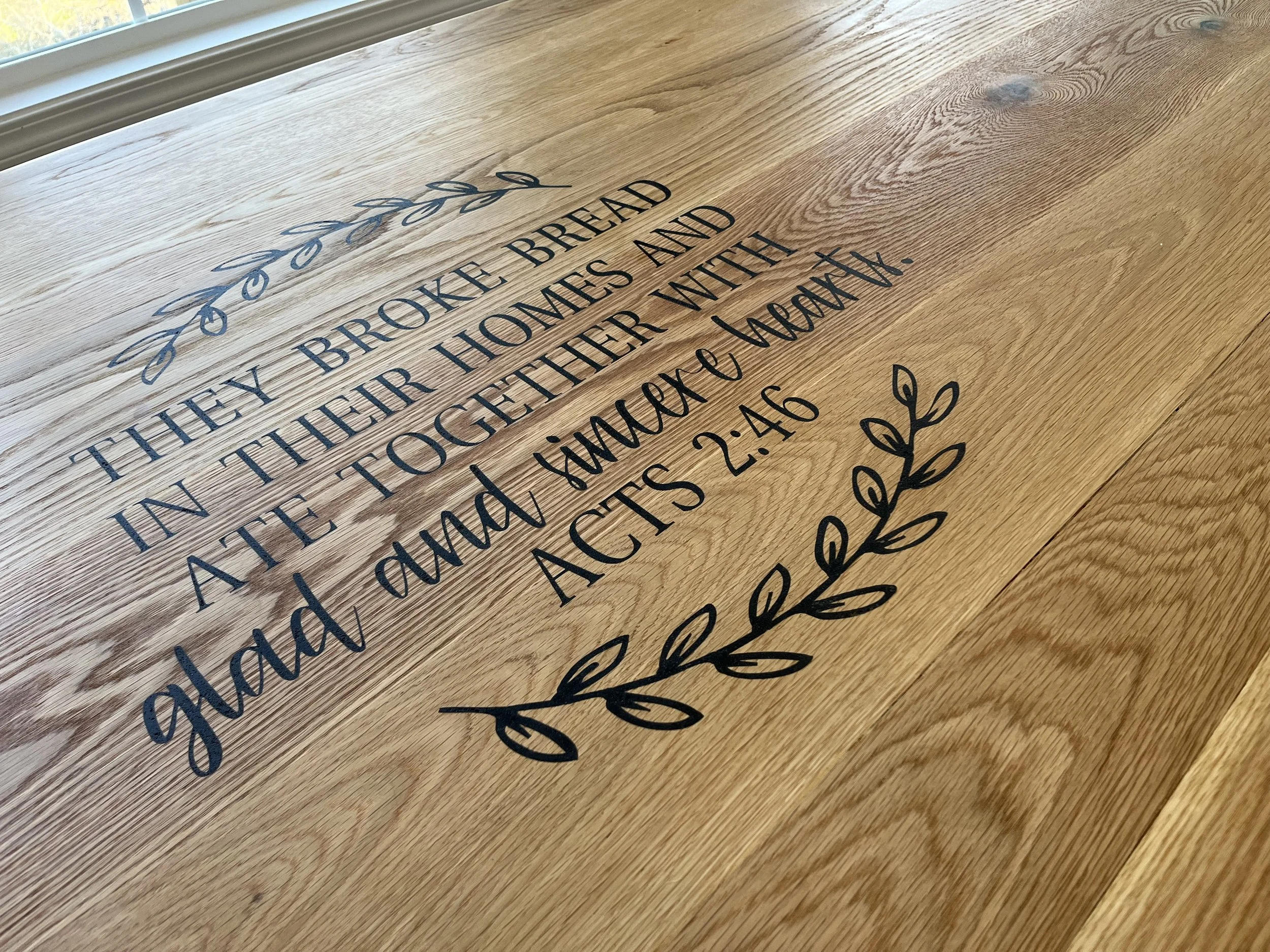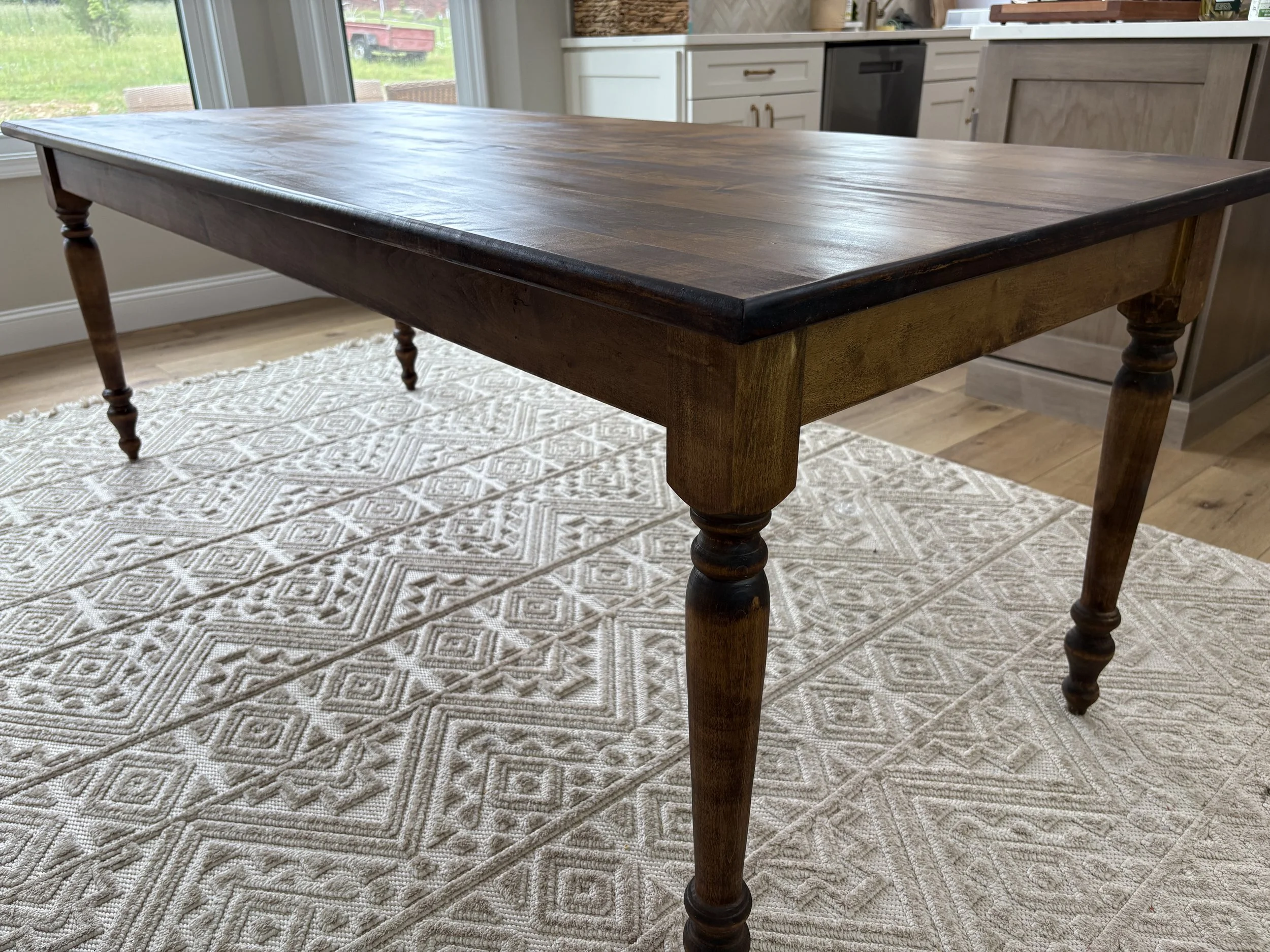8 Mistakes to Avoid When Buying a Piece of Furniture
At Five Solas Woodworking, we believe furniture should be more than just functional—it should carry meaning and last for generations. Unfortunately, many shoppers fall into the same traps that lead to disappointment, wasted money, and pieces that don’t last. Here are eight mistakes to avoid so that your next purchase is an investment, not a regret.
Mistake #1: Settling for Looks Without Checking the Material
A shiny finish can make even the cheapest furniture look appealing, but durability starts with what’s underneath. Particleboard and veneered furniture often look good in the showroom but begin to sag, chip, or peel within a few years. With thinly veneered furniture, these blemishes cannot be repaired. Solid hardwoods—like oak, cherry, maple, and walnut—have natural density and strength that resist daily wear. They also age gracefully, developing a rich patina instead of breaking down. If you buy only for appearance, you’ll likely be shopping again sooner than you planned.
Mistake #2: Ignoring the Joinery
The way furniture is joined together is one of the biggest indicators of its strength. High-end joints like dovetail, mortise-and-tenon, or dowels interlock pieces of wood so they can withstand stress for decades, even centuries. Cheap joints that rely on staples, nails, or glue tend to loosen and wobble with use. If you overlook joinery, you may end up with drawers that stick, chairs that wobble, or tables that collapse under pressure. Always take a close look at how a piece is built—it tells you more about its quality than almost anything else.
Mistake #3: Skipping the Stability Test
Furniture that feels lightweight and flimsy in the store will only feel worse after years of use. A good rule of thumb is to gently shake, lean, or lift a piece before buying it. Solid wood construction will feel substantial and balanced, while cheap construction often feels hollow or unsteady. That “wiggle” in the store may turn into a major problem at home. By skipping this step, you risk paying for something that can’t handle everyday life.
Mistake #4: Following Trends Instead of Choosing Timeless Designs
Trendy furniture often looks exciting in the moment but quickly feels outdated when your tastes or home décor shift. A brightly painted coffee table or ultra-modern sofa may look good today but can stick out like a sore thumb tomorrow. Timeless pieces—classic lines, natural finishes, and neutral tones—blend with different styles over the years. When you choose based on trends, you’re essentially putting an expiration date on your investment. Choosing timeless design means your furniture grows with you, not against you.
Mistake #5: Overlooking the Hardware
Drawers that stick, hinges that squeak, or handles that break can turn an otherwise solid piece into a daily frustration. Hardware isn’t just decoration—it’s the moving parts that determine whether your furniture functions smoothly. Quality hardware should feel solid in your hand, move without resistance, and be attached securely. If you neglect to inspect these details, you could end up with a dresser that’s more of a nuisance than a help. Good hardware is the difference between “furniture that looks nice” and “furniture that works beautifully for years.”
Mistake #6: Forgetting to Ask About the Finish
A furniture finish protects the wood from life’s inevitable accidents: spilled drinks, scratches, or sun exposure. Without a durable finish, even the best hardwood will show damage quickly. Hand-applied oils, stains, and topcoats like polyurethane or lacquer help seal the surface and bring out the wood’s natural beauty. Buyers who overlook this step often end up with tables that stain easily, or surfaces that look tired after only a short time. Always ask how the piece has been finished—it’s not just cosmetic, it’s what determines how well it holds up.
Mistake #7: Buying Mass-Produced Instead of Supporting Local Makers
Mass-produced furniture is designed to be manufactured quickly and cheaply, often at the expense of quality. Corners are cut with inferior materials, thin veneers, and weak joinery. When you buy from local craftsmen, you’re getting more than a piece of furniture—you’re investing in something made with pride, care, and accountability. A local maker stands behind their work and often chooses higher-quality wood and finishes. By ignoring this option, you miss out on furniture that’s designed to last a lifetime and carries a story worth telling.
Mistake #8: Confusing Low Price With Value
The cheapest option often turns out to be the most expensive mistake. While bargain furniture may save you money upfront, it quickly shows wear—irreparable nicks, scratches, and wobbles that shorten its lifespan. Quality furniture, even at a higher upfront cost, pays for itself by lasting longer, looking better, and needing fewer replacements. When you invest in custom-made furniture, you also gain access to the maker who can help maintain or restore it over time. Don’t mistake a low sticker price for real value—true value is measured in years of use and the stories your furniture carries.
Click here to start your custom inquiry today


